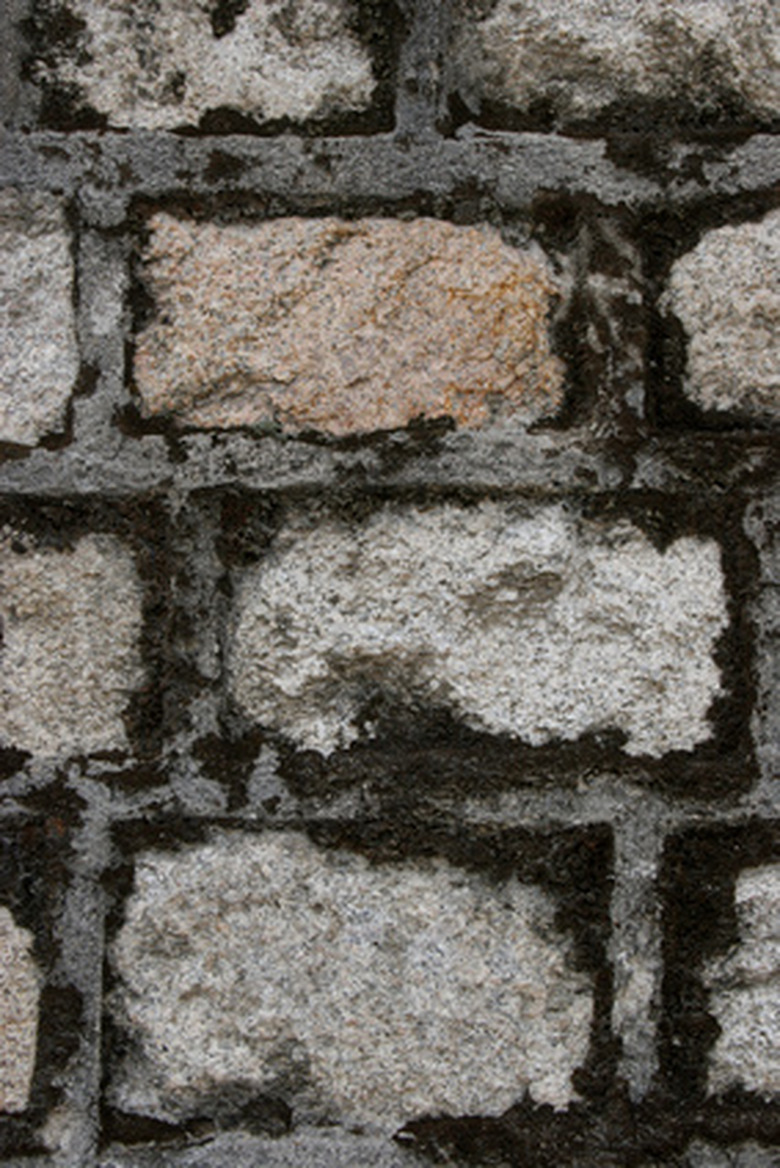How To Clean The Moss Off Of A Brick Patio
Things Needed
- Hard-bristled scrub brushes
- Bleach or vinegar
- Rubber garden gloves
- Pressure washer
- Landscaping sand
While moss can be pretty and useful in your garden or yard, it can be a slippery hazard on patios and walkways. Be sure you keep these areas clear of moss. You may love having trees or canopies overhanging and shading your patio, but moss loves the shade to grow in. Damp or wet spots also create perfect growing conditions for moss, and the brick of patio pavers can retain water from rain or from nearby hoses or sprinklers really well, encouraging more moss growth. Eliminate these conditions, remove existing moss, and take steps to prevent new moss growth. These actions will ensure your brick patio stays clean and moss-free.
Step 1
Scrub the moss off the bricks with a hard-bristled scrubbing brush such as those used for floors. Moss doesn't have roots, so you should be able to get it off with some elbow grease. Use a smaller brush to get in between bricks really well, if needed.
- While moss can be pretty and useful in your garden or yard, it can be a slippery hazard on patios and walkways.
- You may love having trees or canopies overhanging and shading your patio, but moss loves the shade to grow in.
Step 2
Mix a solution of 10 to 20 percent bleach and water to help prevent further moss growth. That means for every cup of bleach you use, mix it with at least 4 cups of water, and up to 8 cups if you want to keep the solution weaker. Scrub the bricks with this mixture to prevent moss from growing back. Always test a small corner of a brick with the bleach first to be sure it won't discolor the pavers. Wear rubber gloves to keep from drying out and roughening your hands with the bleach. If you have concerns about using bleach, or if it will damage your bricks, you can substitute vinegar, which is less harsh on the bricks and your hands.
Step 3
Blast the moss off, if need be. If you have moss over a large area where scrubbing is not practical, use a pressure washer to drive the moss off the bricks. Test this in a small corner first to be sure you won't damage or overturn the bricks. Older and looser bricks may not withstand pressure washing as well as newer brick patios will. Use the washer properly to avoid damage, spraying at a low angle across the bricks, not straight down.
- Mix a solution of 10 to 20 percent bleach and water to help prevent further moss growth.
- If you have concerns about using bleach, or if it will damage your bricks, you can substitute vinegar, which is less harsh on the bricks and your hands.
Step 4
Dry out the patio. Be sure all the bricks are dry before laying down sand. Leftover water trapped between bricks will only encourage future moss to move in. Doing this on a sunny, warm day is the best choice for quick drying. Once the patio is dry, fill in cracks between bricks with fine landscaping sand to create a dry, flat surface and discourage any more moss from springing up.
Tip
You also can use moss-controlling products containing zinc sulfate after you have gotten rid of moss on your brick patio. Mix a granular form in with the landscaping sand to deter future growth. These chemicals are less harmful than most herbicides, but should not be used where they will come into contact with copper, as they corrode it and cause harmful runoff.
